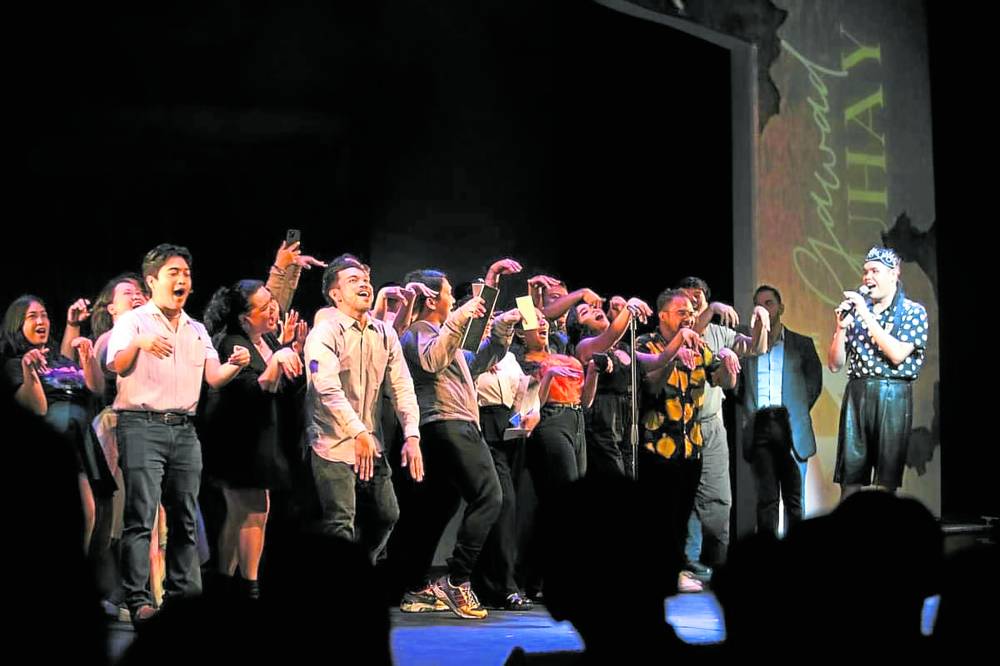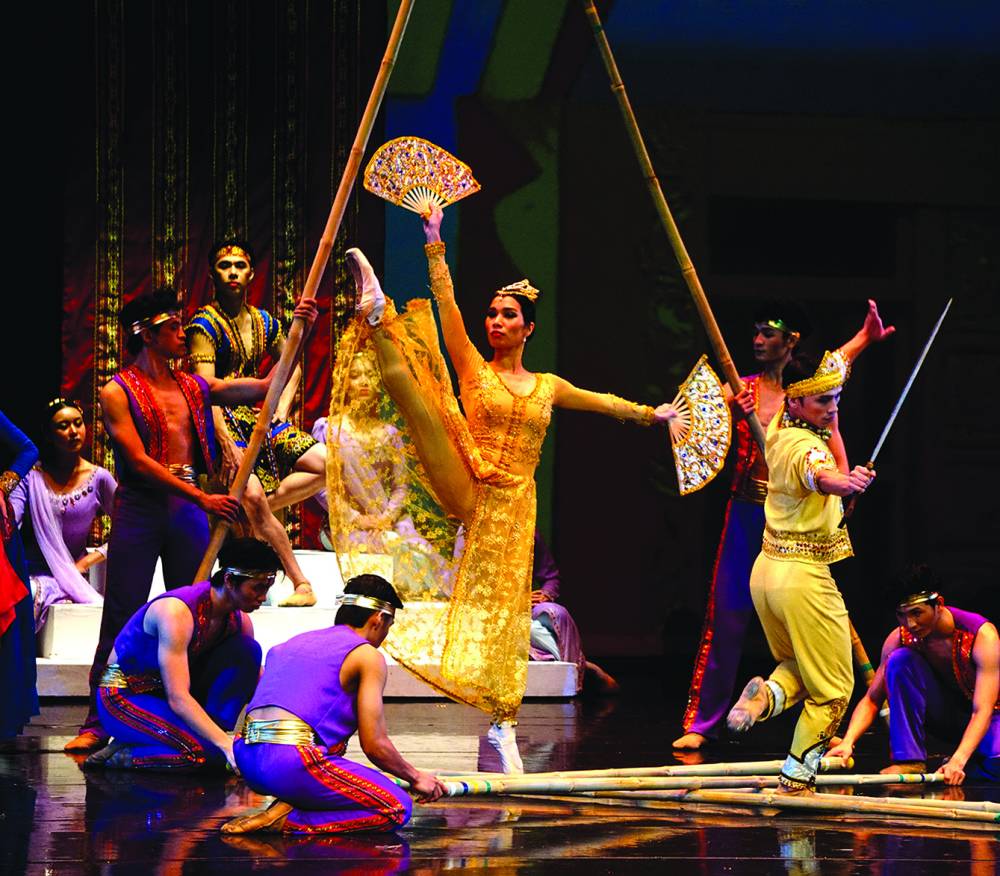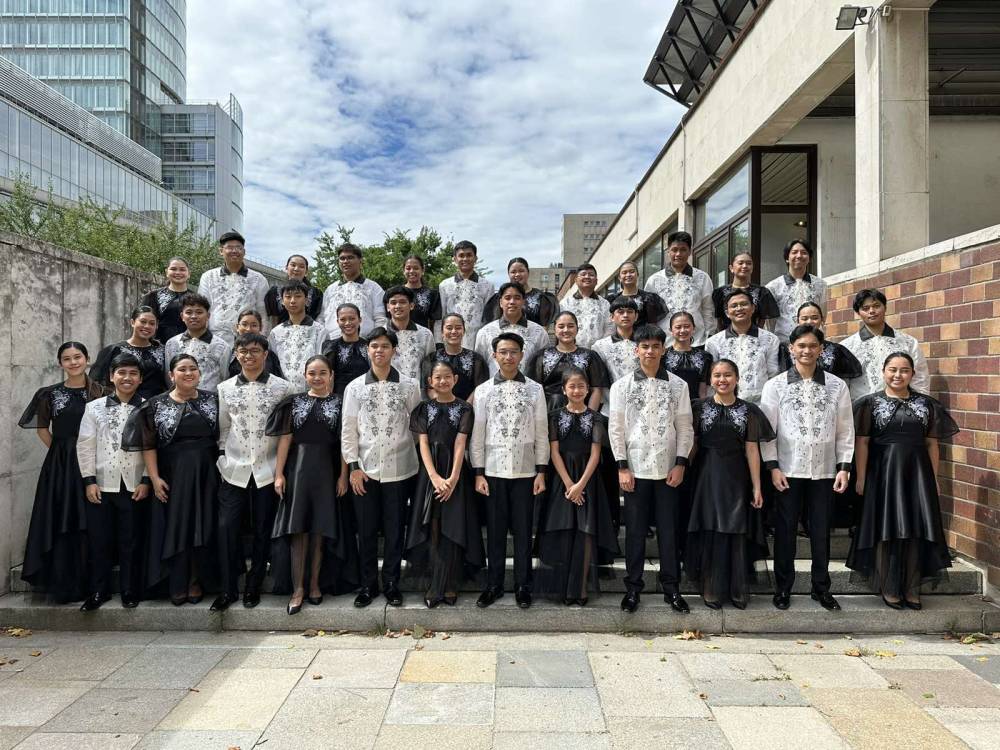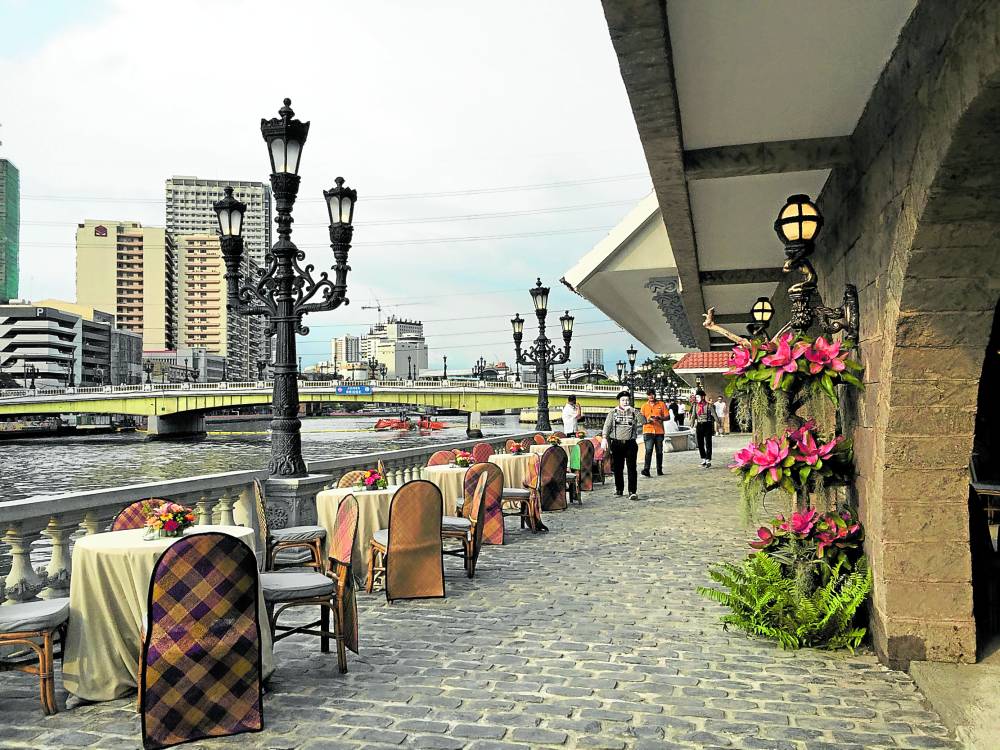
I n one performance of the hit comedy musical “Walang Aray” that was staged by the 56-year-old Philippine Educational Theater Association (Peta) from mid-February to mid-May this year, there is a scene where a traffic enforcer is reading an advisory written on a scroll. The farce is a modern adaptation by Rody Vera of Severino Reyes’ most popular zarzuela, “Walang Sugat” (1898), and considered Peta’s comeback production after three years of being waylaid by the COVID-19 pandemic.
The man in uniform, who looks more like a town crier with a big hat, is telling commuters and calesa-riding motorists to avoid certain sections of Intramuros because a big group of activists called Katipuneros are holding a rally against Spanish friars. The announcement ended with: “Lagda (Signed), Cecile Guidote-Alvarez, chairman, M.M.D.A.”
In a regular run, there is no mention of a name, just “Ipinag-uutos, M.M.D.A.”
Loud laughter naturally would always follow, but what audience members at the jam-packed Peta-Phinma Theater didn’t know that particular night was, Guidote-Alvarez, founding artistic director of Peta, was seated with them.Blueprint for Peta
“We always invite her to our productions, and once in a while we acknowledge her presence, but only before a show begins. That was one instance the actors thought of something else. And Cecile loved it. She was laughing and had a really good time,” Cecilia “CB” Garrucho, president of Peta, says.
Garrucho joined Peta more than half a century ago, after seeing its maiden production titled “Bayaning Huwad,” a Filipino translation by Wilfredo Sanchez of a play in English, “Straw Patriot” by Virgie Moreno, which was directed by Guidote-Alvarez. It was staged at the open-air Rajah Sulayman Theater in Intramuros, from December 1967 to January 1968. Garrucho said she felt at home with Peta because it was staging plays in Filipino. At the time, most theater companies were doing plays in English. Even Filipino playwrights wrote plays almost exclusively in English.
When Guidote, not yet with a hyphen and Alvarez for a surname, founded Peta on April 7, 1967, she was only 23. She just came from finishing her graduate studies at the Trinity University in San Antonio, Texas, with theater credits from the Dallas Theater Center.
Her thesis, “A Prospectus for the National Theatre of the Philippines,” which was later published in book form, titled “Theater For The Nation,” became the blueprint for Peta.
It was her aim to democratize theater, reaching the economically challenged neighborhoods, the boondocks and the remotest villages to give workshops and performances. It was a national theater movement that would champion Filipino plays and encourage playwrights to write in Filipino or in their respective dialects.
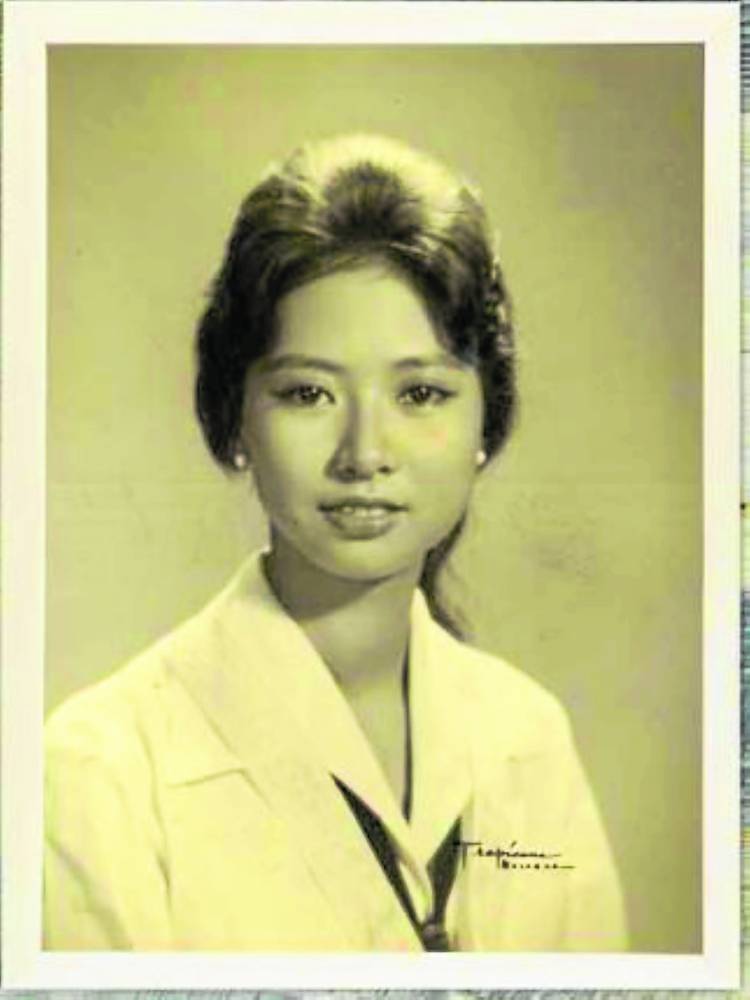
Purely accidental
“Many told me, ‘Cecile, it can’t be done, it’s impossible, you’ll fail, do something else.’ Some would even say I was crazy for even attempting to do that. At the time, if you say theater, it meant Broadway productions or adaptations from West End and all that. If written by Filipinos, they are in English,” Guidote-Alvarez says.
Heherson Alvarez, her boyfriend who was an activist from—where else—the University of the Philippines (UP) Diliman, was very instrumental in realizing her dream—though in some instances, it was purely accidental.
On one of their dates in Intramuros, the wide-eyed, vibrant colegiala, who graduated summa cum laude with double degrees from St. Paul University, discovered the potential of an empty space with an elevated platform, just a few steps from the catacombs among the ruins in Fort Santiago. Heherson may have seen a romantic hideaway, but what his giddy Paulinian date saw was a stage. It would later be called the Rajah Sulayman Theater. “When I saw the ruined structure, I thought it was perfect for a theater, something close to the people,” she says. But first things first. She needed to establish her theater company.
“We organized Peta officially through a national convention held in Pope Pius XII Center on April 7, 1967. We had a lot of participants coming from the different provinces,” she writes in her yet-to-be published autobiography tentatively titled “Memoir of a Freedom Fighter’s Artist Wife.”“The head of the National Parks Development Committee, Doroy Valencia, was executive producer. He financed our Fort Santiago theater season and allowed Paco Park as a home for the Metropolitan Teen Theater League, first led by Siegfried Sepulveda, an energetic talented high-school student from Lourdes School. Dr. Anding Roces was our first chairperson of the board. As the head of Unesco Philippine Commission, he offered a space at the UN building for our office,” Guidote-Alvarez recalls.
Cultural ideology
Peta had its first headquarters on the third floor of what was then the UN Building on Taft Avenue. “Peta’s philosophy, or call it cultural ideology, was accepted, met the call of the times for nationalism and patriotism and the concept of ‘Filipino First’ cultural policy. Volunteerism was the engine as we grew by leaps and bounds even if we didn’t have funds.”
For a few months since it was founded, it staged some plays and conducted acting workshops in schools like St. Paul’s and Ateneo on its Padre Faura Campus before getting all the permits to prepare the Rajah Sulayman Theater.
“April 7, 1967 was the official christening of Peta, although much earlier there were numerous kinds of workshops that I was undertaking with my students at St. Paul’s and other colleagues that were with me in ‘Teenagers’ and in other performances,” she writes. “Teenagers” was a television show she produced and directed.
“We had one-act plays with Jess Peralta and my students at St. Paul’s.” Before the year ended, Peta staged “Huwad” on Dec. 29, 1967.
With Moreno’s consent, the Filipino translation was done by poet Sanchez. “Huwad” is about a man who offers his goddaughter to an American soldier in return for his family’s farmlands.
Vic Silayan, Robert Arevalo and Lolita Rodriguez, who were then popular film actors, were part of the cast along with Peta’s pioneering members Lily Gamboa, Nick Lizaso, Joonee Gamboa and a latecomer in the play, another activist from UP Diliman named Lino Brocka. “The play gave birth to Lily Gamboa’s professional stage career; she won rave reviews as Concha. Through her voice and face, Lily personified innocent beauty that committed suicide after being raped. This aroused the audience’s angry reactions, which was palpable in an intimate space,” Guidote-Alvarez says.
Crazy visionary
It was a production that only a “crazy, stubborn” visionary director could think of, using live sound, live cannon, even a live horse.
“I contracted the bell-ringer of the (nearby) Manila Cathedral to ring the church bells at the right time to mark the evening Angelus to start the play. We had people moving around so the audience was engaged in a ‘sensurround’ live experience through the growing cries of people coming from different directions and converging on the main stage of action,” Guidote-Alvarez writes in her memoir.
“We had a real cannon that was fired. We started using media projections and I had a live horse on stage mounted by Allan Cosio as the guerrillero, giving the arrest order to Vic Silayan. I wanted to also encourage original music composition and not just use recorded music from existing films generally used in school productions.”
Heherson was a friend of Andrea Veneracion, the founder of the Philippine Madrigal Singers.
“He was able to secure the Madz (Philippine Madrigal Singers) to provide live singing. I asked Dangal de Leon to play the guitar and compose the theme music, which was taken from the revolutionary song of Joselinang Baliwag. The poor and the rich were together at Fort Santiago,” Guidote-Alvarez writes.
“Huwad” was a hit among theater lovers and the general audience, like regular park visitors, lovers on a date, family members on a picnic, who chanced upon the play.
“It reinforced my convictions. There was an audience waiting to be provided a mirror and memory bank of our own identity and history, an armor against social ills and an anchor to appreciate our heritage,” she adds.
First ‘Portrait’
The year 1968 was another historic season of plays. One was the Filipino translation of Nick Joaquin’s “A Portrait of the Artist as Filipino.”
“The unique Theatre in the Ruins ambience created an impact. The next big thing was commissioning the first Filipino version of Nick Joaquin’s classic ‘A Portrait Of The Artist As Filipino.’ Two UP writers, Alfred Yuson and Franklin Osorio, were assigned to do the Filipino translation,” she adds.
With Joaquin’s consent, Guidote-Alvarez decided to use the title “Larawan” instead of the long version.
“And there were more movie stars willing to play besides Lolita Rodriguez as Paula and Rita Gomez as Candida. Dante Rivero, then an upcoming contract star of Lea Productions, had his real breakthrough as Tony Javier in ‘Larawan.’ We also were lucky to have Leopoldo Salcedo as Manolo, Mila Del Sol and Veronica Palileo.
“We had a Caltex official, Raul Paredes, playing Bitoy. Of course, we had our Peta students like Leonor Infante and Sherry Lara doubling in production staff and leading the guests of tertulia. There were Joy Soler and Lorli Villanueva as the vaudeville dancers. Lino Brocka was given a featured role of Don Perico in ‘Larawan’ and behind the scenes, he got involved as our PR secretary, the only paid staff at a minimum price because he was enthused to join the movement.”Nick Joaquin, Anding Roces join
“Lea Productions was enthusiastic about the stage debut of Dante Rivero, his attentiveness during rehearsal reaped good mileage and reviews,” she continues.
“Nick (Joaquin) was so happy about our version of ‘Larawan.’ His work had been staged so many times before in English but through our own Peta production, we were the ones who translated it first into our mother tongue and staged in Fort Santiago, which was serendipitously the setting of his story. Nick was so amazed with the flexible staging of his play that he made it a point to be part of the procession scene every night,” Guidote-Alvarez writes.
“Not only Joaquin but on some nights, there were Doroy Valencia and Anding Roces joining the procession, carrying candles at the ramparts, complete with a live band and fireworks.
“It was a stunning replica of a Marian religious ritual. We had to turn people away because the venue was limited but it was a magnet for attendance. It was considered our longest running play,” she adds.
To use the term applicable now in social media, through reviews and word-of-mouth, “Larawan” was trending. In fact, then first lady Imelda Marcos came to see it. Guidote-Alvarez was elated. Martial law seemed light years away and everything was okay with the status quo.
“It was a surprise. About six hours before the show, some members of the Presidential Security Group cased the joint and delivered a high-back cushioned chair. But it was also a stressful time. Mila del Sol was not around and I had to pinch hit for her cameo role. From there, it became exciting as more people got involved in our training and our diverse repertoire.”
When martial law was declared in 1972, Heherson was on the list of dissidents with a shoot-to-kill order. The Alvarez couple had to escape and for the next decade and a half, lived in exile in the United States. Because his life was at risk, Heherson was the first to flee on a boat to Hong Kong before going to the US.
Before Guidote-Alvarez left to follow her husband, she handed Brocka the leadership of Peta, even giving him the check that came with the 1972 Ramon Magsaysay Foundation’s Outstanding Asian Award for Public Service. She was only 28 and still the youngest Filipino laureate. That’s not far off the record: The Dalai Lama was the youngest, as he was only 24 when he was given the award during the first RM Awards in 1959, though he received the medallion only on April 26, 2023.
In her speech in 2017 during Peta’s 50th year celebration, Guidote-Alvarez explained, “As a mother, I wanted to protect Peta from the political onslaught of the dictatorship which had marked me and my husband as oppositionists. I wanted them to be free to continue to thrive, and it was in fact Divine Providence so that on their own, steeped in our methodology, in our cultural ideology, they would carry on and fly to greater heights. Although as a mother, you were always there for invisible support and as a cheering squad leader.”
She founded other group when she returned in the ‘80s, and officiated government agencies like National Commission for Culture and the Arts, but she never went back to Peta. She was a devoted wife to a lawmaker, a freedom fighter, a rare breed of public servant. She also beat cancer twice and COVID-19, which unfortunately claimed Heherson’s life in 2020.
Guidote-Alvarez led Peta in its first six years and she devoted all her young life to it because it was a dream realized, the thesis of a visionary, some say stubborn and crazy colegiala, that became a national theater movement.
“Signed, Cecile Guidote-Alvarez, founder, P.E.T.A.,” the “Walang Aray” actor could have read, but who knows? Like a surprise ending in a Lola Basyang story, one of these days she could really be chairman of MMDA.











